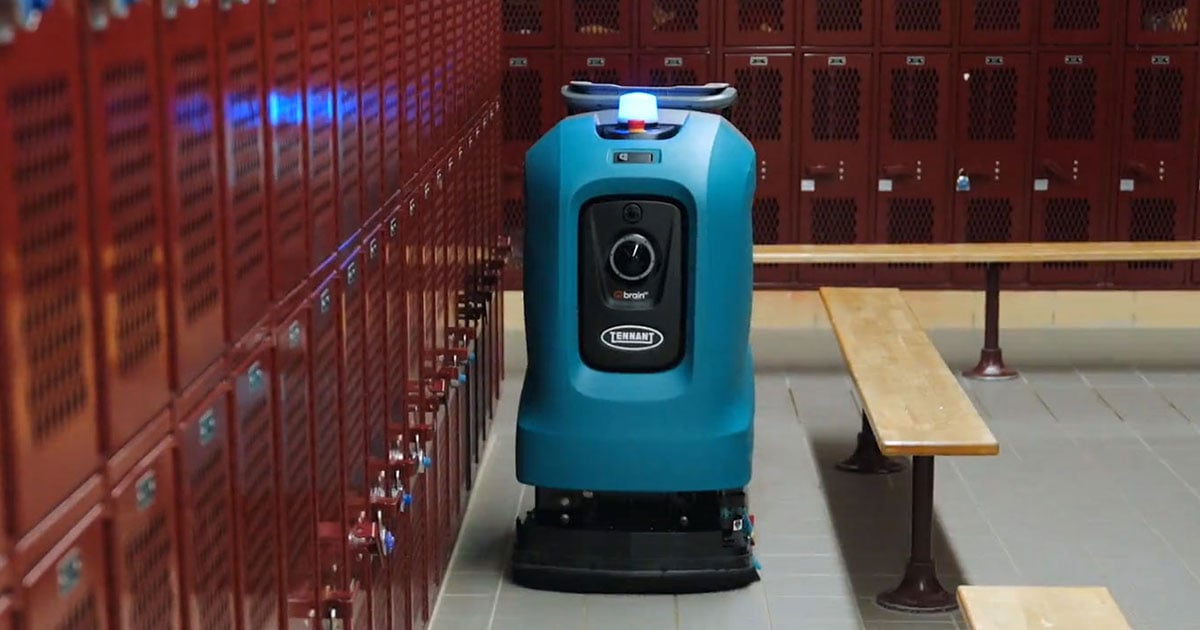21 min read
Sustainable Cleaning in Schools Means Brighter Futures for Students
Cleaning is essential, but sustainable cleaning is where schools can truly shine — literally and figuratively. Beyond tidying up, it's an opportunity...
2 min read
 BradyPLUS Editorial
:
August 07, 2024
BradyPLUS Editorial
:
August 07, 2024

As a school custodian, your job of creating healthy and safe environments for students and staff never ends. It's a year-round job to research floorcare techniques and look for ways to improve efficiency, particularly when school is out for the summer.
We understand that both cleaning and researching take valuable time, especially given the labor shortages affecting school staffing across the country.
“These days, one of the biggest challenges school custodians are facing is having enough time and having enough labor to be able to do all the things they need to do,” said Keith Schneringer, Senior Director of Marketing for JanSan + Sustainability at BradyPLUS.
That’s why we’re here to help you identify the best processes and products to become more efficient in your job.
Let’s start with the most common types of floors you’re responsible for cleaning in a school:



“You’ve got a whole variety of floorcare surfaces in your typical school and each one is going to require its own set of solutions that are inclusive of chemistry, equipment, and tools so they can be properly maintained,” said Schneringer.
However, no matter what type of floor you’re cleaning, we’ve got a helpful acronym, PDIR, to help your maintenance routine be more efficient.

Example: You might place a floor entry mat to trap and remove dirt and particles.

Example: Your daily mopping, auto scrubbing, vacuuming, and carpet spotting.

Example: In addition to daily mopping the floor, you might occasionally burnish, or spray buff the floor to create a better shine.

Example: Deep project cleaning, where you might scrub off several coats of resilient floor and then build up the finish from there.
“An ounce of prevention is better than a pound of a cure,” said Schneringer. “The more that you can do the preventative and the daily maintenance, the longer you can extend the cycle where you don’t have to do as much restorative. Restorative is more time-consuming and expensive.”
You can use equipment and mechanization as a force multiplier so that each custodian can get maintenance procedures done in less time, whether cleaning floor surfaces, refinishing, or extracting.
For example, let’s say you have a large area of hard floor that takes you an hour to mop. You could potentially use an auto scrubber and get the job done in just 15 minutes!
In another area, you might have a 12-inch upright vacuum that can clean at less than 3,000 square feet per hour while a backpack vacuum can enable you to clean at more than 10,000 square feet in the same time frame.
“The type of equipment makes a big difference in your productivity rate,” said Schneringer.
So, how do you know what type of mechanization is best for your school?
Our consultants take a comprehensive approach called the Essential 8 to uncover challenges across eight critical areas of your facility care program. We go out to schools to take a first-hand look at a space and then systematically identify solutions to create cleaner, healthier, safer, and more sustainable facilities.
We created two essential guides designed to support your school's cleaning staff.

Are you ready to implement labor-saving solutions that will make your floorcare operation more efficient and effective? Reach out to BradyPLUS today, and we’ll help you identify the right products, including mechanization, to meet your school’s needs. Contact us today! ⬇️

21 min read
Cleaning is essential, but sustainable cleaning is where schools can truly shine — literally and figuratively. Beyond tidying up, it's an opportunity...

9 min read
August 29th, 2024, was a remarkable day for the custodial staff at Aurora Public Schools.

9 min read
Did you know that elementary school students experience 5–8 illnesses each year, while teens catch an average of 3–4 colds¹? These frequent illnesses...